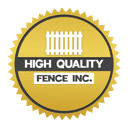Maintaining Your Fence: Tips For Long-Lasting Beauty

Maintaining the beauty and longevity of your fence is not just about enhancing the curb appeal of your property; it’s a crucial aspect of responsible homeownership. A well-kept fence not only adds to the aesthetics but also serves as a vital element in securing your premises. From the classic charm of wooden fences to the low-maintenance appeal of vinyl and the durability of metal options, each material demands thoughtful care to withstand the test of time and weather.
In this comprehensive guide, we’ll delve into the essential tips for maintaining your fence, ensuring it remains a sturdy and attractive feature for years to come. We’ll explore the unique characteristics and vulnerabilities of different fence materials, providing insights into the specific care each one requires. Whether you’re a proud owner of a traditional wooden fence, a sleek vinyl enclosure, or a robust metal barrier, our guide will equip you with the knowledge and techniques needed to preserve and enhance its beauty.
Regular inspections, effective cleaning methods, timely repairs, and strategic landscaping are just a few of the topics we’ll cover. We’ll also discuss the importance of protective coatings and sealants, offering recommendations to shield your fence against the elements. As we navigate through seasonal considerations and DIY versus professional maintenance, you’ll gain a holistic understanding of the practices that contribute to the long-lasting allure of your fence. Join us on this journey to discover how a little care and attention can go a long way in maintaining the enduring beauty of your property’s perimeter.
Understanding Your Fence Material
Understanding the material of your fence is paramount in ensuring its longevity and aesthetic appeal. Different fence materials come with unique characteristics, vulnerabilities, and maintenance requirements.
Wooden fences, for instance, provide a classic and natural look but are susceptible to rot, insect infestations, and warping if not properly maintained. Knowing how to seal, stain, and protect the wood is crucial for preserving its beauty over time.
Vinyl fences, on the other hand, are lauded for their durability and low maintenance. However, they can become brittle over time, especially in extreme weather conditions. Recognizing the signs of cracks or discoloration is essential to address issues before they escalate.
Metal fences, including iron and aluminum, are valued for their strength and security. Yet, they are prone to rust and corrosion, particularly in regions with high humidity or near saltwater. Regular inspections and treatments with rust-resistant coatings can mitigate these concerns.
Each material demands a tailored approach to cleaning and maintenance. Routine inspections should include checking for loose boards in wooden fences, cracks in vinyl, and signs of rust in metal fences. Understanding the specific vulnerabilities of your fence material allows you to implement preventive measures and address issues promptly.
In essence, a well-maintained fence not only enhances the curb appeal of your property but also serves as a protective barrier. Taking the time to comprehend the intricacies of your chosen material ensures that you can implement the right care regimen, leading to a fence that stands the test of time, both functionally and aesthetically.
Regular Inspection And Cleaning
Regular inspection and cleaning are crucial aspects of maintaining your fence and preserving its longevity. These routine tasks not only enhance the aesthetic appeal of your property but also contribute to the structural integrity of the fence. Here’s a breakdown of the key elements in regular inspection and cleaning:
- Routine Inspections:
- Check for Loose Components: Examine your fence for any loose boards, nails, or screws. Tighten or replace as necessary to ensure structural stability.
- Inspect for Signs of Decay: For wooden fences, look for signs of rot or decay. Pay close attention to areas in contact with the ground, as they are more susceptible to moisture and insects.
- Examine Hardware: Check latches, hinges, and other hardware components for proper functioning. Lubricate moving parts to prevent rust and ensure smooth operation.
- Survey for Pests: Inspect for signs of insect infestation, such as termites, especially in wooden fences. Address pest issues promptly to prevent further damage.
- Cleaning Tips:
- Remove Debris: Regularly clear away leaves, branches, and other debris that may accumulate around the fence. Piled debris can retain moisture and contribute to deterioration.
- Mold and Mildew Removal: Use a mixture of water and mild detergent to clean surfaces prone to mold and mildew growth. For wooden fences, a diluted bleach solution can also be effective, but be cautious to protect nearby vegetation.
- Addressing Rust and Corrosion: Metal fences may develop rust over time. Use a wire brush to remove surface rust, then apply a rust converter and a protective coating to prevent further corrosion.
- Power Washing: Depending on the material, consider using a power washer for a thorough cleaning. Adjust the pressure according to the fence type to avoid damage.
- Frequency:
- Perform these inspections and cleaning routines at least twice a year, preferably in spring and fall, to address seasonal challenges.
- After severe weather events, such as storms or heavy rainfall, conduct an extra check to ensure no significant damage has occurred.
By incorporating regular inspections and cleaning into your maintenance routine, you not only enhance the visual appeal of your fence but also contribute to its durability and overall performance. Addressing issues proactively during inspections can prevent minor concerns from evolving into more significant problems.
Repairs And Replacements
Repairs and replacements are inevitable aspects of maintaining a fence, and addressing issues promptly is crucial for extending its lifespan and preserving its visual appeal. Here’s a breakdown of key considerations for repairing and replacing different types of fences:
- Identifying And Fixing Damaged Components:
- Wooden Fences:
- 1. Loose or Missing Boards: Regularly check for loose or missing boards and secure them back in place or replace them. Ensure that nails or screws are tightly fastened.
- 2. Rot and Decay: Inspect for signs of rot or decay, especially in areas prone to moisture. Replace affected sections and treat the wood with appropriate preservatives.
- Vinyl Fences:
- 1. Cracks and Holes: Examine the fence for any cracks or holes. Small cracks can often be repaired with vinyl patch kits, while larger damage may require replacement of the affected panels.
- 2. Discoloration: Address any discoloration promptly, as it can be a sign of sun damage. Regular cleaning and the application of vinyl-friendly cleaners can help maintain the color.
- Metal Fences:
- 1. Rust and Corrosion: Remove rust using a wire brush, and apply a rust converter or inhibitor. For severe cases, consider replacing affected sections. Regularly applying a protective coating can prevent rust.
- Knowing When It’s Time For A Replacement:
- Signs of Irreversible Damage:
- 1. Extensive Rot in Wooden Fences: If a large portion of the wood is severely rotted, replacement may be more cost-effective than continuous repairs.
- 2. Unrepairable Cracks in Vinyl: When cracks in vinyl panels are extensive and beyond repair, replacement becomes necessary.
- 3. Extensive Rust in Metal Fences: If a significant portion of a metal fence is heavily rusted, replacing those sections or the entire fence may be the best solution.
- Upgrading to a More Durable Material:
- 1. Assessing Long-Term Needs: Consider upgrading to a more durable material if your current fence material is consistently facing challenges. This can enhance both longevity and overall property value.
By regularly inspecting and addressing issues as they arise, you can extend the life of your fence and minimize the need for extensive repairs or replacements. Additionally, knowing when to opt for a replacement ensures that your property continues to enjoy the benefits of a well-maintained and aesthetically pleasing fence.

Seasonal Maintenance
- Spring:
- Inspection and Cleaning: Conduct a thorough inspection after winter to identify any damage caused by freezing temperatures. Clean off any accumulated dirt or debris.
- Repair: Fix any issues that may have arisen during winter, such as loose boards or damaged sections.
- Summer:
- Vegetation Management: Trim any overgrown plants or vines near the fence to prevent damage. Ensure proper air circulation to avoid moisture accumulation.
- Stain and Seal: If you have a wooden fence, summer is an ideal time to apply stains and sealants for protection against UV rays and moisture.
- Fall:
- Leaf Removal: Keep the fence line clear of fallen leaves, as they can trap moisture and lead to mold or mildew growth.
- Coating Check: Inspect any protective coatings, especially for metal fences, and reapply if necessary to prevent rust.
- Winter:
- Winterizing: In colder climates, consider winterizing your fence. For wooden fences, this may involve applying a protective layer to guard against the effects of freezing temperatures.
- Snow Removal: Remove accumulated snow from the fence, especially if it’s a heavy, wet snow that could strain the structure.
- Year-Round Tips:
- Regular Inspections: Regardless of the season, perform routine inspections for any signs of damage or wear.
- Address Issues Promptly: If you notice any problems, such as loose boards or rust spots, address them promptly to prevent further damage.
- Adapt to Climate: Tailor your maintenance routine to the specific climate of your region, considering factors like humidity, rainfall, or extreme temperatures.
In conclusion, the beauty and longevity of your fence are within reach through conscientious and seasonal maintenance. Understanding the nuances of your chosen material, whether wood, vinyl, or metal, empowers you to implement targeted care strategies. Regular inspections, proactive repairs, and protective measures such as coatings or sealants are key elements in preserving your fence’s aesthetic appeal and structural integrity. Embracing a seasonal maintenance approach ensures that your fence is resilient in the face of diverse weather conditions. By investing time and effort into the upkeep of your fence, you not only enhance your property’s curb appeal but also contribute to a lasting and durable outdoor structure that stands as a testament to meticulous care.


